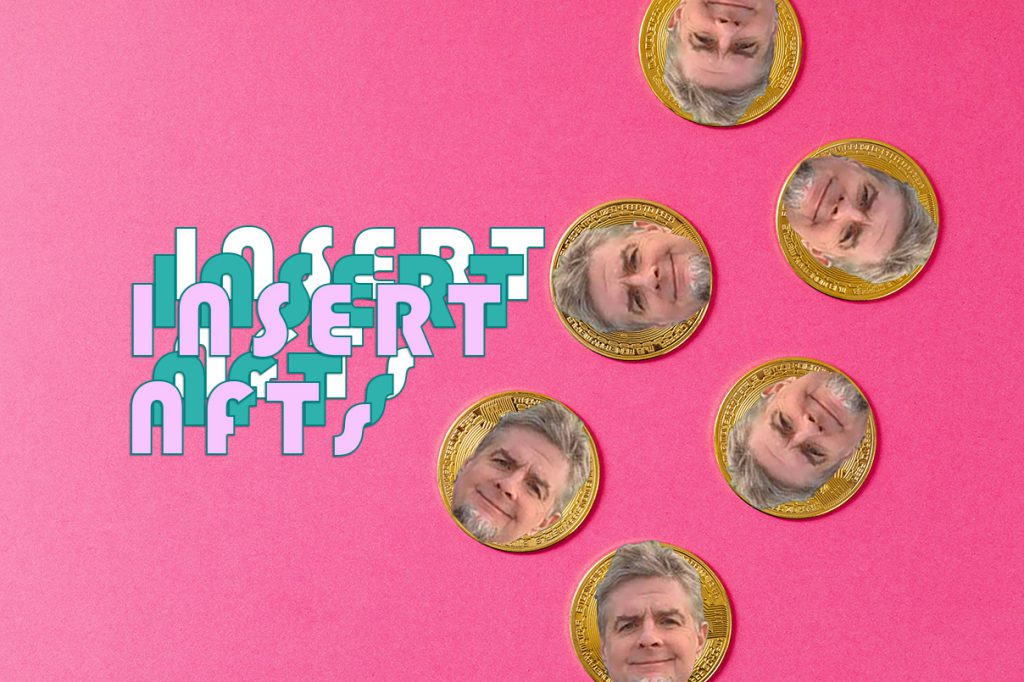Insert Foot: NFT sounds confusing, but could be beautiful music for artists’ bank accounts

INSERT FOOT and NFTs. Original image courtesy: Karolina Grabowska.
My editor sent me an important message today. Get to the bottom of this NFT stuff.
Right … NFT … No (Freaking) Tony. On it.
Wait, what?
Apparently, NFT refers to an exciting new method by which musicians—“artists,” as my 12-year-old calls them—are starting to get paid. As a music publication, we here at RIFF are supposed to understand how musicians make money. Which was news to me. I was a musician (well, a drummer, close enough) and had no idea money was involved. I thought it was just a cheap way to get into a club.
For clarity, I just texted an old bandmate, who’s now some music industry honcho (MIH). I asked him about NFT, to which he replied it was like blockchain, an opinion I also found during my extensive (30 or 40 seconds) of research.
OK, I got it … blockchain. What’s blockchain again? He doesn’t know either (DKE).
After some careful reading, NFT seems to stand for “non-fungible tokens.”
Fungible?
It’s a collectible with value based on cryptocurrency. A digital certificate of authenticity from the creator of said art, a concept I understand in physical art as something for which you pay when obtaining said piece (and, without which, makes it terribly difficult to get full value at re-sale).
If something is “fungible”—once you’re done trying to figure out the inherent clever wordplay—that means it’s interchangeable with similar objects of equal value. Like money featuring mugshots of the same dead white man.
So being non-fungible means something is super special. And we all love being super special, so there’s value there. How that value translates to real money, I’m still not clear on.
Does that make it like shares of stocks? Which I sort of understand until math becomes necessary and I start sobbing like someone tied to the stage at a K-Pop festival.
Is NFT like when athletes sold shares of their “brands” a few years ago? I thought that was a little nutty, until I remembered I used to go to baseball card shows and watch people write checks for other people’s signatures. We get what we pay for, at least in our minds.
What I do see is another way for musicians to get paid. That’s the good news, I think.
Let’s assume I understand how virtual money translates to real money (I don’t). If nothing else, NFT establishes validity for the artist and another emotional connection to fans.
I just found a visual artist named Beeple, also known as Mike Winkelmann, who sold a lovely video piece called “Crossroad #1/1.” I initially wondered why anyone would paint me passed out on a lawn somewhere near Reno in the early ’90s … until I noticed the repulsive hair and loser-centric graffiti on the blubbery naked carcass. Obviously this was Donald “You can stop calling him President” Trump, near a beach, either dead or passed out like a smelly, bloated Florida whale.
Someone bought this for $6.6 million … of either virtual or real money. Either way, it sounds like a lot.
That isn’t the point. I’m not an art critic (well, kind of). The point is there’s something to this. The biggest impediment to being an artist, musician, actor, (writer – don’t forget writer), is that it’s a terrible way to make money. Very few adults encourage children to go into art because they won’t make enough to support their parents as they start to smell like old people. Any legitimate way for more people able to make a living making art can be a wonderful thing, especially if it strengthens relationships with fans.
Not only is art (music, theater, painting, writing, whatever) in the eye of the beholder, so is its value. Even when it’s difficult to understand, tying the two together seems to be a great idea. Which is why I’m selling this column!
Follow music critic Tony Hicks at Twitter.com/TonyBaloney1967.
